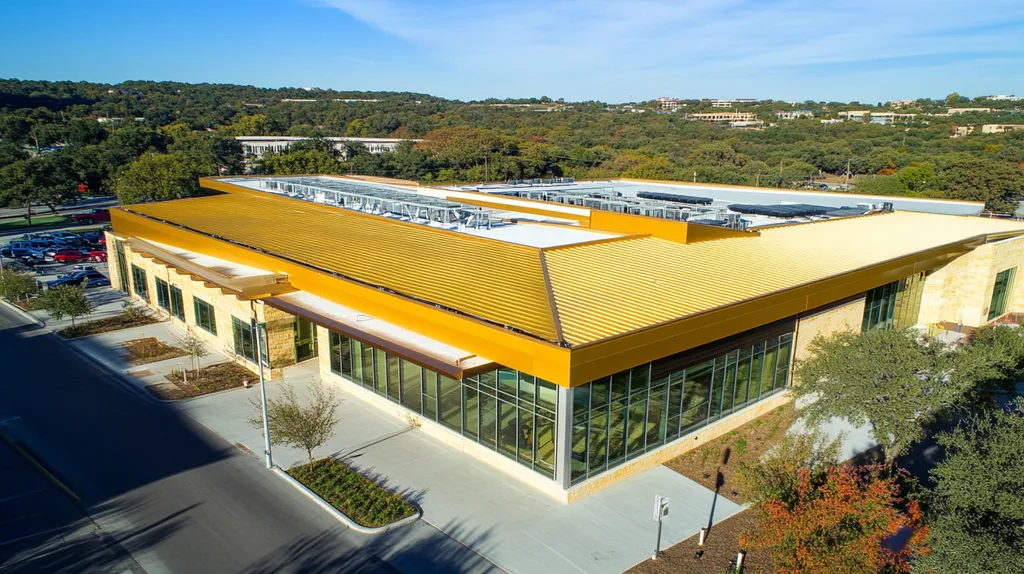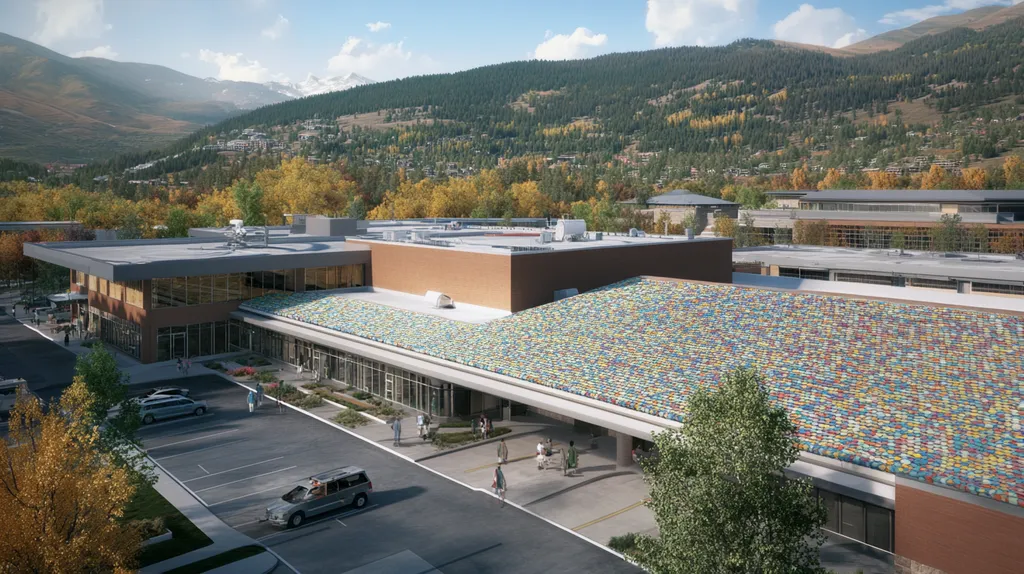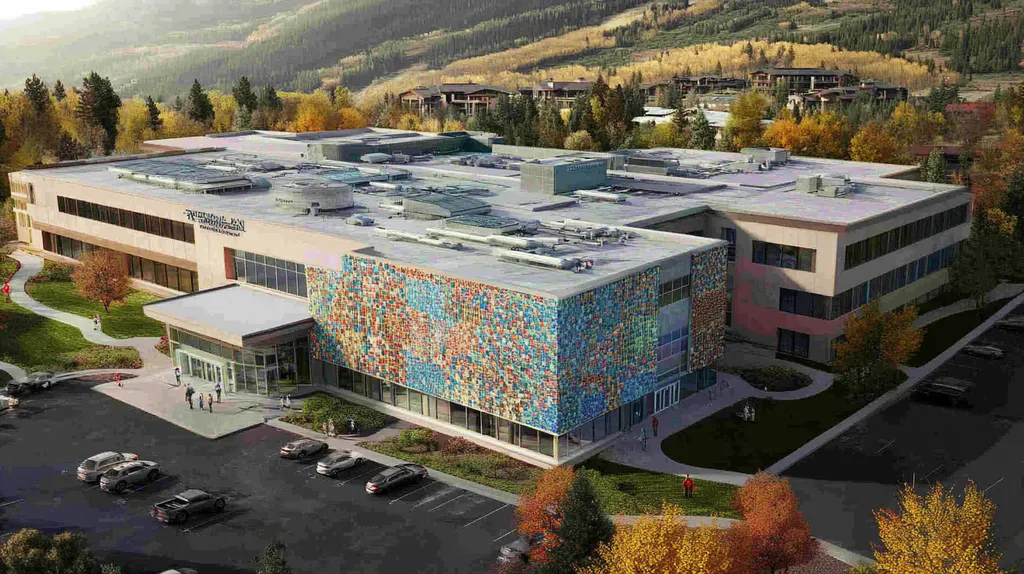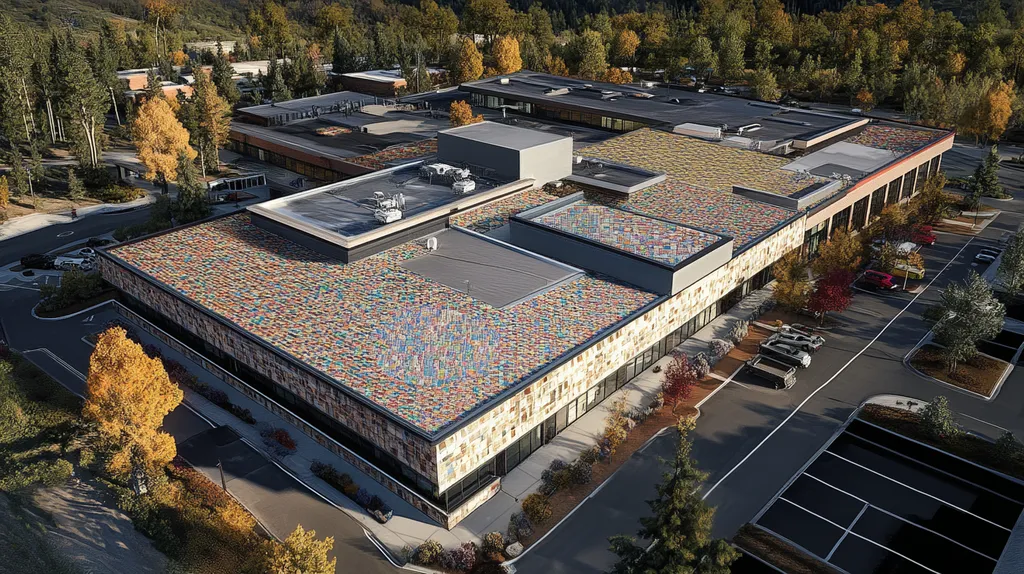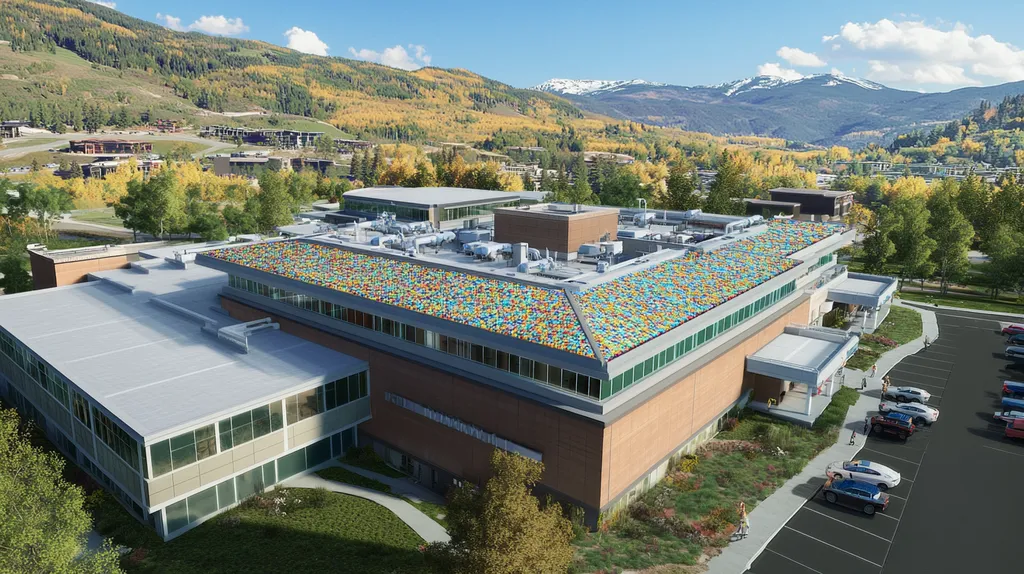Commercial rooftop equipment accounts for up to 40% of a facility’s operational costs, yet research shows that 73% of building owners lack comprehensive management strategies for these critical systems.
From HVAC units to solar installations, improperly managed rooftop equipment can slash system efficiency by 30% while accelerating structural deterioration.
This checklist equips facility managers with actionable solutions across six key areas: performance monitoring, financial planning, compliance, risk management, operational procedures, and long-term considerations.
SECTION 1: PERFORMANCE FACTORS
Recognizing the impact of rooftop equipment on a commercial building’s budget is essential for facility managers. Research reveals that inefficient rooftop systems can inflate energy costs, often accounting for over 30% of overall operational expenses. To mitigate unexpected financial burdens, evaluating energy efficiency, equipment capacity, and potential roof stress is paramount. Addressing these performance factors not only supports cost savings but also extends the lifespan of the roof.
Assessing Energy Efficiency of Rooftop Equipment
Energy efficiency is critical for managing a building’s operating costs effectively. Facility managers should routinely evaluate the efficiency ratings of HVAC systems and other rooftop devices. For example, an outdated air conditioning unit can consume 20-40% more energy than its modern counterparts.
Conducting regular energy audits is a proactive step in identifying inefficient equipment. These audits not only empower informed decision-making but also illuminate immediate areas for improvement. Upgrading to ENERGY STAR-rated equipment can lead to significant reductions in energy usage.
Incorporating smart technologies for monitoring energy consumption can further optimize savings. Automating temperature controls and scheduling allows managers to align energy use with actual demand, minimizing waste. By adopting these strategies, facility managers enhance both sustainability and cost-effectiveness.
Key Action Items
Evaluating Equipment Capacity and Load Matching
Accurate equipment capacity is vital for maintaining both roof integrity and operational performance. Overloading a roof with excessive HVAC units can compromise structural integrity and lead to costly repairs. Facility managers need to ensure that all installed equipment aligns with the building’s designated load requirements.
The first step is conducting a detailed load calculation, assessing heating and cooling needs based on occupancy and usage patterns. This precision enables the selection of appropriately sized units, which enhances efficiency and reduces wear and tear.
As occupancy or usage changes, continuous assessments may be necessary. Factors like new tenants or shifts in usage can impact load requirements. Regular reviews help managers adjust capacity as needed to avoid frequent breakdowns, downtime, and potential financial losses.
Key Action Items
Diagnosing Equipment-Related Roof Stress Points
Rooftop equipment can place considerable stress on a building’s roof, making it essential to identify and address stress points. Heavy units or improperly placed equipment may compromise roofing materials over time, leading to significant issues.
Facility managers should perform regular inspections to look for signs of stress such as sagging or pooling water near equipment bases. These indicators can suggest that the roof is struggling to support its load, and early identification is critical for preventing further damage.
Implementing appropriate reinforcement strategies, such as adding support beams or redistributing weight, can mitigate risks. Understanding how weight distribution affects roof integrity is crucial, and in cases of excessive stress, consulting a structural engineer is advisable.
Key Action Items
SECTION 2: FINANCIAL CONSIDERATIONS
Facility managers and property owners must grasp the financial implications of rooftop equipment. Inadequate budgeting can unexpectedly inflate expenses through emergency repairs and diminished energy efficiency. Research shows that poor management can inflate operating budgets by up to 30%. This section highlights essential financial factors related to rooftop equipment management and offers actionable steps for effective budgeting.
Calculating Direct and Indirect Equipment-Driven Costs
Direct costs encompass all expenses associated with the purchase, installation, and servicing of rooftop equipment. These costs are typically straightforward, such as those for HVAC systems or solar panels. In contrast, indirect costs can sneak in unnoticed, often leading to larger financial issues.
For instance, equipment malfunctions can create downtime that negatively affects productivity and revenues. Furthermore, the long-term energy inefficiency of older systems may contribute to rising utility bills, posing hidden costs that accumulate over time. Facility managers must analyze both direct and indirect costs to shape a complete financial overview.
Executing a comprehensive cost-benefit analysis for each piece of equipment can enhance budgeting decisions. It’s vital to consider replacement cycles and efficiency benchmarks, ensuring budgets are allocated effectively. Regular tracking and annual reviews of equipment costs and performance will reinforce financial planning as a committed long-term investment.
Key Action Items
Budgeting for Equipment Maintenance and Replacement
Proactive budgeting for equipment maintenance is pivotal in avoiding unexpected expenses. Facility managers should allocate funding not only for initial installation but also for ongoing maintenance. Regular upkeep can significantly extend equipment lifespans and prevent larger, costlier repairs.
A reliable guideline suggests reserving 1-2% of equipment replacement costs each year for maintenance. For instance, setting aside $500 to $1,000 annually for a $50,000 rooftop unit can yield considerable savings in the long run.
Furthermore, keeping track of equipment age and monitoring performance metrics can better predict replacement needs. Delaying equipment replacement can not only result in expensive repairs but also lead to operational inefficiencies, further straining the budget.
Key Action Items
Leveraging Incentives and Rebates for Rooftop Upgrades
Numerous local and federal programs provide financial incentives for upgrading rooftop equipment to more energy-efficient options. These incentives can significantly alleviate funding pressures when planning major renovations. Facility managers should take the initiative to explore available rebates, tax credits, and grants aimed at enhancing sustainability.
For example, the Federal Investment Tax Credit can cover a substantial portion of solar panel installation costs, boosting return on investment. Additionally, utility company rebates for adopting energy-efficient technologies can further diminish initial expenses.
By weaving these financial incentives into the budgeting process, property owners can achieve necessary upgrades with minimal impact on their finances. Staying informed about evolving regulations and new assistance programs allows facility managers to make informed decisions that enhance long-term operational cost savings.
Key Action Items
SECTION 3: COMPLIANCE REQUIREMENTS
Understanding compliance regulations is vital for facility managers, as they not only uphold legal obligations but also directly influence budget considerations and the longevity of rooftop systems. Failure to adhere to building codes, environmental regulations, and safety standards can result in steep fines and costly repairs, potentially increasing operational expenses by up to 20%. By prioritizing compliance, facility managers protect their investments and ensure smooth operations.
Understanding Building Codes Affecting Rooftop Equipment
Building codes serve as crucial regulations that ensure safety and structural integrity in construction. Each municipality establishes specific guidelines that dictate the requirements for rooftop equipment, including weight limits and the need for additional support for heavier systems.
Ignoring these codes can lead to severe safety hazards and structural failures, which pose significant liabilities for the facility. Moreover, surprising delays may arise if non-compliance is discovered during routine inspections. Careful planning by consulting local regulations can help prevent these setbacks.
Additionally, familiarizing oneself with these codes can assist in selecting the right equipment. For instance, rooftop HVAC units may need to meet particular energy efficiency standards, yielding benefits for both the budget and the environment.
Key Action Items
Ensuring Environmental Regulations and Emissions Compliance
Environmental regulations concerning emissions from rooftop equipment significantly affect operational costs and compliance responsibilities. Many regions enforce stringent guidelines on HVAC systems, generators, and others to control pollutants.
Budgeting for equipment that meets these environmental standards is essential for preventing fines and penalties. Facilities failing to comply with emissions regulations may incur severe ecological fines that negatively impact their budget.
Implementing sustainable technologies can enhance efficiency while reducing energy costs. For example, energy-efficient roof fans not only lower operational expenses, but also satisfy emissions requirements.
Key Action Items
Navigating Safety Standards for Roof-Mounted Systems
Safety standards play a crucial role in managing rooftop equipment, as they protect personnel and safeguard facility investments. Various industry standards dictate installation and maintenance procedures to minimize accidents.
Compliance with safety standards from organizations such as OSHA or NFPA is mandatory and can significantly impact financial outcomes. For instance, insufficient fall protection measures during maintenance can lead to serious injuries and costly legal claims.
Facility managers should enforce safety protocols, conduct regular training, and invest in protective equipment. This not only protects staff but also boosts overall operational efficiency.
Key Action Items
SECTION 4: RISK MANAGEMENT
Commercial roofs face ongoing pressure from various rooftop equipment, leading to significant structural risks if not regularly assessed. Research shows that nearly 30% of commercial roof failures can be traced back to equipment-related issues. Facility managers must proactively identify potential risks associated with equipment loads, environmental factors, and equipment failures. This section will outline effective strategies to mitigate these critical areas, ensuring the roof’s integrity and protecting the overall budget.
Identifying Structural Risks from Rooftop Equipment Loads
Every commercial roof needs to support significant loads from equipment like HVAC units, piping, and solar panels. If these loads exceed the roof’s structural capabilities, it can result in serious problems such as sagging or even collapse. Facility managers should routinely evaluate the weight distribution of both existing and planned rooftop equipment.
Load calculations should factor in not only the equipment’s weight but also conditions like wind uplift and snow accumulation. Failing to conduct comprehensive assessments can lead to unexpected repair costs that strain budgets. Collaborating with structural engineers for thorough evaluations can effectively mitigate these risks.
Regular monitoring of the roof’s condition is crucial for identifying structural issues early. Inspections should be conducted frequently, especially after severe weather events or when new equipment is installed. This proactive approach can save facility managers from substantial repair costs and ensure long-term roof performance.
Key Action Items
Mitigating Weather and Environmental Damage Factors
Weather poses a significant threat to commercial roofs, particularly those supporting heavy equipment. Elements such as rain, snow, and strong winds can accelerate wear and damage. To maintain optimal roof performance, it must be designed to withstand environmental factors in addition to rooftop equipment loads.
A proper drainage system is essential to prevent ponding water, which can degrade roofing materials over time. Using materials resistant to UV radiation and extreme temperatures can also extend the roof’s lifespan, facilitating support for equipment without issues.
Routine maintenance and inspections are critical to manage environmental wear. Facility managers should ensure all rooftop equipment is secured and protected from severe weather impacts. For example, equipment should be anchored properly to withstand high winds.
Key Action Items
Planning for Equipment Failure Contingencies
Unforeseen equipment failures can drastically affect a facility’s operations and finances. Essential systems like HVAC units may fail unexpectedly, leading to repair costs and potential service disruptions.
Facility managers should develop contingency plans that include emergency response strategies and allocate budgets for unanticipated repairs. Forming relationships with dependable service contractors will guarantee swift action when equipment issues occur, minimizing downtime.
Additionally, establishing preventive maintenance schedules can reduce the likelihood of equipment failures. Regular servicing can identify potential weaknesses before they escalate into major problems, safeguarding the roof and the overall budget.
Key Action Items
SECTION 5: OPERATIONAL PROCEDURES
Efficient management of rooftop equipment is vital for both performance and budget control. Facilities that establish systematic maintenance procedures can enhance the durability of their rooftop systems by up to 30%. This highlights the need for well-defined operational protocols that ensure regular maintenance of rooftop assets while aligning with broader roofing evaluations. The following subsections outline critical strategies for effective rooftop equipment management.
Establishing Scheduled Maintenance Protocols for Rooftop Units
Implementing scheduled maintenance protocols is essential for avoiding unexpected rooftop equipment failures. Routine inspections, conducted at least biannually, help ensure optimal functionality and adherence to health and safety regulations.
By incorporating these protocols into operational budgets, facility managers can forecast expenses effectively and avoid crises that could strain financial resources. Additionally, keeping accurate records of maintenance activities not only protects warranties but also facilitates access to necessary replacement parts.
Utilizing a computerized maintenance management system (CMMS) can enhance tracking and scheduling, providing reports on equipment performance over time.
Key Action Items
Coordinating Equipment Inspections with Roof Assessments
For effective management, coordinating rooftop equipment inspections with regular roof assessments is crucial. This integrated approach ensures that both the roof’s structural integrity and equipment functionality are evaluated together, allowing for early identification of potential issues.
For example, leaks in the roof can jeopardize HVAC performance, making it essential to address these concerns during simultaneous inspections. A thorough checklist that includes both roof and equipment metrics can streamline scheduling and resource management.
Engaging roofing and equipment specialists during these assessments offers valuable insights into the interdependencies between the roof’s condition and the equipment’s operation.
Key Action Items
Training Facility Personnel on Equipment Impact Management
Effective rooftop equipment management starts with comprehensive staff training. Facility personnel must understand the relationship between equipment and roof integrity, as well as its influence on operational costs. Regular training programs should emphasize essential maintenance tasks and emergency protocols.
By educating employees to recognize early signs of wear or potential failures, facilities can reduce downtime and lower repair expenses. Creating a knowledge-sharing culture encourages continuous improvement in understanding system interactions.
Prioritizing a proactive approach to equipment management fosters a sense of accountability among staff, minimizing the risk of budget overruns due to overlooked maintenance obligations.
Key Action Items
SECTION 5: OPERATIONAL PROCEDURES
Managing rooftop equipment effectively is crucial for maintaining performance and controlling expenses. Studies indicate that facilities that establish structured maintenance protocols can extend the lifespan of rooftop units by up to 30%. This highlights the importance of having clear operational procedures in place that facilitate regular care for rooftop systems while aligning with overarching roofing assessments. The following subsections detail vital strategies for efficient rooftop equipment management.
Establishing Scheduled Maintenance Protocols for Rooftop Units
Scheduled maintenance is essential to prevent unexpected failures of rooftop equipment. Facilities should conduct regular inspections at least biannually to ensure optimal performance and compliance with health and safety regulations.
Incorporating these maintenance protocols into operational budgets helps facility managers forecast expenses, reducing the risk of financial strain from emergencies. Additionally, accurate documentation of maintenance activities protects warranties and aids in accessing replacement parts when necessary.
Using a computerized maintenance management system (CMMS) can streamline the tracking and scheduling of maintenance tasks, providing insightful reports on equipment performance over time.
By prioritizing ongoing maintenance, facilities can achieve substantial energy savings and lengthen the lifespan of their equipment, thus enhancing cost efficiency.
Key Action Items
Coordinating Equipment Inspections with Roof Assessments
To ensure effective management, facility managers should integrate rooftop equipment inspections with regular roof assessments. This dual approach ensures simultaneous monitoring of the roof’s integrity and the equipment’s functionality, allowing for early detection of potential issues.
For example, roof leaks can severely disrupt HVAC performance. Addressing such concerns during coordinated inspections helps prevent further damage to both the roof and equipment. Establishing a checklist that covers both roofing and equipment metrics will streamline inspection scheduling and resource allocation.
Engaging qualified roofing and equipment specialists during inspections will also provide valuable insights into how the roof’s condition affects equipment performance.
In this way, aligning these inspections protects the investments made in both roofing and equipment, ensuring smooth, cost-effective operations.
Key Action Items
Training Facility Personnel on Equipment Impact Management
Staff training is a critical investment in effective rooftop equipment management. Personnel must comprehend how rooftop equipment impacts roof integrity and overall costs. Regular training programs should emphasize basic maintenance tasks and emergency response protocols.
Equipping employees to recognize early signs of wear or equipment failure enables them to report issues promptly, reducing downtime and repair costs. Implementing a knowledge-sharing culture empowers staff to continuously enhance their understanding of system interactions.
Promoting a proactive approach to equipment management fosters accountability among staff, minimizing budget overruns due to neglected maintenance duties. Ensuring all staff are familiar with maintenance schedules improves engagement and responsibility.
In summary, comprehensive training on equipment impact significantly contributes to safeguarding both the roof and budget.
Key Action Items
The Bottom Line
With rooftop equipment representing up to 40% of operational costs, facility managers can no longer afford reactive management approaches that lead to premature system failures and budget overruns.
Research shows that implementing comprehensive equipment management strategies can reduce energy costs by 30% while extending roof lifespan by up to 15 years.
From regular structural assessments to coordinated maintenance protocols, each element of this checklist serves as a critical building block for protecting both equipment investments and overall facility budgets.
As regulations tighten and technology evolves, proactive management of rooftop systems becomes increasingly vital for maintaining competitive operational costs and ensuring sustainable building performance.
The time to act is now – before equipment issues escalate into major financial burdens.
FREQUENTLY ASKED QUESTIONS
Q. How do performance factors influence my commercial roof budget?
A. Performance factors, such as energy efficiency and equipment capacity, significantly affect budgeting. Inefficient rooftop systems can increase energy costs and reduce the roof’s lifespan, leading to unexpected expenses. Regular evaluations and upgrades can help mitigate these financial impacts.
Q. What financial considerations should I keep for my industrial roof?
A. It’s important to understand both direct and indirect costs linked to rooftop equipment. Budgeting for regular maintenance and replacements is crucial to cover unexpected repairs and improve efficiency over time, ultimately saving on operational expenses.
Q. How often should I review compliance on my commercial roof?
A. Compliance should be reviewed regularly, especially during installations or after any regulations change. Understanding building codes, environmental standards, and safety regulations helps prevent expensive fines and protects your investment over the long term.
Q. What risk management strategies are essential for commercial roofs?
A. Essential strategies include regular structural assessments and monitoring for environmental damage. Proper load calculations should be performed to ensure equipment does not exceed the roof’s capacity, while contingency plans can mitigate the impact of unexpected equipment failures.
Q. How can I ensure effective operational procedures for my rooftop equipment?
A. Establish scheduled maintenance protocols and coordinate inspections with roof assessments. Training staff on best practices and documentation is crucial for maintaining optimal functioning and prolonging equipment lifespan, thus enhancing budget control.
Q. What maintenance practices can prolong the life of rooftop equipment?
A. Regular maintenance checks and using a computerized management system help track equipment health. Implementing a proactive approach with scheduled inspections ensures equipment operates optimally, reducing long-term repair costs and improving overall performance.
Q. How can I address equipment impacts on my roof effectively?
A. Prioritize staff training on maintenance and the interdependencies between equipment and roof integrity. Regular inspections should be conducted to track equipment performance, helping in early identification of issues that could affect the roof’s condition.

